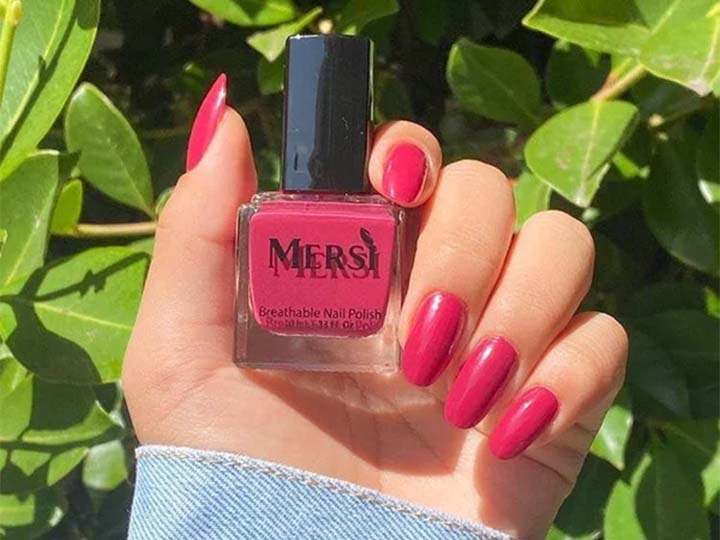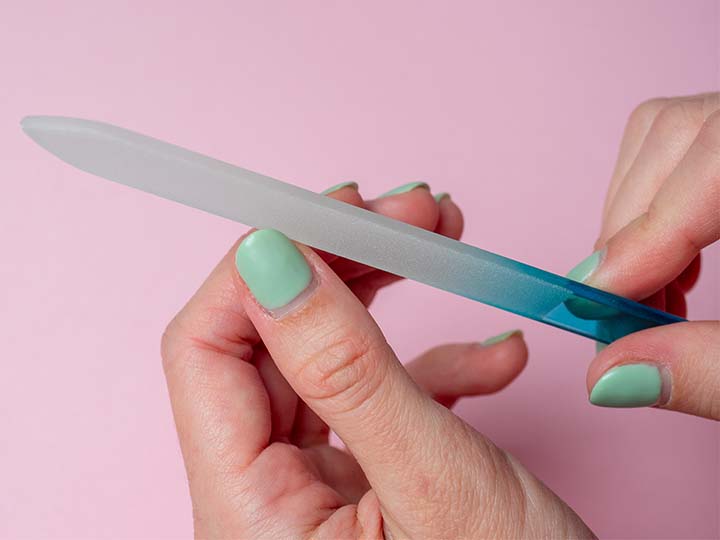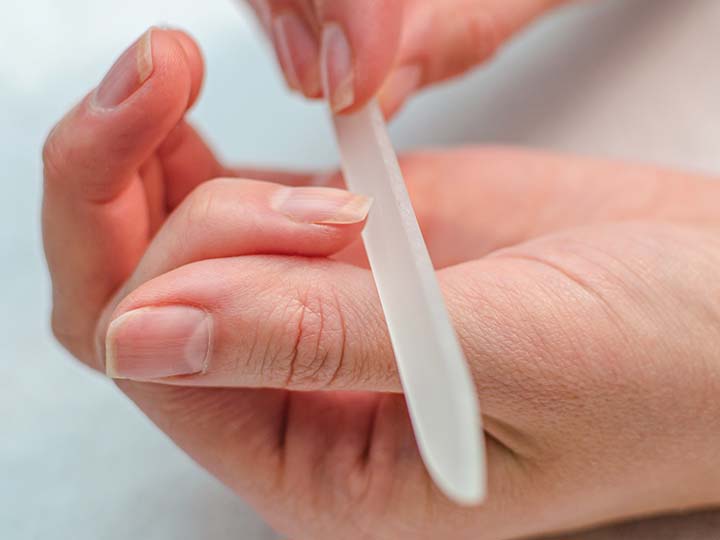Nail polish is an everyday beauty essential for many people, adding a splash of color and personality to their nails. But have you ever wondered where this beauty product originated? When was nail polish invented, and how did it evolve into the product we know and love today?
The history of nail polish is far more fascinating than you might think, with roots going back thousands of years. From ancient civilizations who used it as a sign of wealth and power to the glossy, chip-resistant formulas we use now, nail polish has a rich and colorful past.
The Origins of Nail Polish in Ancient Civilisations
The history of nail polish begins in ancient times, with the earliest forms dating back more than 5,000 years. Civilizations like China and Egypt were among the first to experiment with nail color, but their methods were far from the convenient bottles of polish we have today.
Ancient China: 3000 BC
The earliest records of nail polish come from ancient China around 3000 BC. People in the royal family and upper class would use nail color to signify their social status. Their "polish" was made from natural ingredients like beeswax, egg whites, vegetable dyes, and gum Arabic. While not as shiny or durable as modern formulas, these early polishes were a status symbol, with different colors representing different levels of power.
Fun Fact: During the Zhou Dynasty (1046–256 BC), members of the royal family would wear gold and silver nails, while lower classes were forbidden from using such luxurious colors.
Ancient Egypt: 3000 BC
Around the same time, ancient Egyptians were also using nail color, though their approach was slightly different. In Egypt, nail color was often used to distinguish social ranking, with darker shades reserved for the elite. Cleopatra, known for her beauty, favored a deep red polish made from henna. Meanwhile, the lower classes used paler shades.
For Egyptians, beauty and grooming were essential parts of life, and nails were no exception. Painting nails was more than just a cosmetic choice—it reflected power, wealth, and status.
Ancient India: Henna for Nails
In ancient India, henna was used to stain both nails and skin. This form of nail color was commonly used in celebrations and religious rituals, creating intricate patterns and a deep reddish-brown hue on nails. Henna remains a popular nail decoration in India and other parts of the world today.
Nail Polish in Modern History
While ancient civilisations were using natural dyes and polishes, the invention of modern nail polish as we know it came much later.
1920s: The Birth of Modern Nail Polish
The first truly modern nail polish was invented in the 1920s, thanks to developments in the automotive industry. The creation of shiny, durable car paint inspired French makeup artist Michelle Menard to apply the same principles to nails. The result? A glossy, pigmented nail polish that closely resembles the formulas we use today.
Menard’s idea was picked up by the founders of Revlon, who launched their iconic nail polish line in 1932. Revlon’s formula used pigments instead of dyes, creating vibrant colors that became a hit with women around the world. This was a turning point in beauty history, making nail polish widely available and affordable for the first time.
Key Moment: In the 1930s, the use of red nail polish became a trend, thanks to Hollywood starlets like Rita Hayworth and Jean Harlow, who sported bold, glamorous nails in films. The association between red nails and femininity was cemented during this era.
1950s: The Rise of Colour Variety
By the 1950s, nail polish was a staple in women’s beauty routines. New colours were introduced regularly, and the once-dominant red nails were joined by softer pinks, corals, and nudes. During this period, painting your nails became not just about fashion but also about expressing your individuality.
This era also saw the rise of matching nails to lips, with many women choosing to coordinate their nail polish with their lipstick. It was a time of glamour, and a polished look was a symbol of femininity and sophistication.
1970s: Nail Art and Experimentation
The 1970s brought an explosion of creativity and experimentation in nail design. Nail art began to gain popularity, with intricate designs and bold patterns becoming fashionable. The invention of acrylic nails also revolutionized the beauty industry, offering women the option to create longer, more durable nails than ever before.
This decade saw the beginning of nail salons becoming more widespread, with professional manicures and nail art services growing in popularity.
1980s and 1990s: Bold Colours and Pop Culture Influence
By the 1980s and 1990s, nail polish trends were heavily influenced by pop culture. Neon colors, glitter, and bold designs became a staple of the era. Celebrities and musicians like Madonna and the Spice Girls popularised funky, colorful nails, and nail polish became a form of self-expression, particularly for younger generations.
During the 1990s, the "grunge" look brought darker shades like black, deep purples, and blues into fashion. Nail polish was no longer just about glamour—it was about attitude.
The Evolution of Nail Polish in the 21st Century
Today, nail polish has become a global beauty phenomenon, with countless brands and colors available on the market. From classic reds to holographic glitters, the options are endless. But the evolution of nail polish hasn’t stopped at colors and designs.
Gel and Shellac Nails
One of the biggest innovations in recent years has been the introduction of gel and shellac nails. These types of polish offer long-lasting wear and a shiny finish that can last for weeks without chipping. Gel polish is cured under a UV lamp, making it more durable than traditional polish.
Non-Toxic and Eco-Friendly Polishes
As beauty consumers become more conscious of the ingredients in their products, many brands have shifted towards creating non-toxic, "5-free" or "10-free" polishes. These formulas exclude harmful chemicals like formaldehyde, toluene, and DBP (dibutyl phthalate) without compromising on color or quality.
The Rise of Nail Art
In the age of social media, nail art has reached new heights. From Instagram to Pinterest, there’s no shortage of inspiration for creative and elaborate nail designs. Nail art has become a major trend, with intricate patterns, metallics, and even 3D elements gracing the fingertips of fashionistas around the world.
Wrapping It Up: The Colourful History of Nail Polish
Nail polish has come a long way from its early beginnings in ancient China and Egypt. From natural dyes to the glossy, long-lasting formulas we use today, the evolution of nail polish is a fascinating journey. As it continues to change with new trends, innovations, and cultural influences, one thing remains constant—nail polish is a timeless expression of beauty, fashion, and individuality.
Whether you're sporting classic red nails or experimenting with the latest nail art, every manicure is part of a centuries-old tradition that shows no sign of fading away.
Love the skin you're in with Mersi's all-natural range. Shop now and embrace your beauty!
FAQs
-
When was modern nail polish invented?
Modern nail polish was invented in the 1920s, inspired by car paint, and popularised by Revlon in 1932. -
What did ancient civilizations use for nail polish?
Ancient civilisations like the Chinese and Egyptians used natural ingredients like beeswax, egg whites, and henna to stain and colour their nails. -
Who popularised nail polish in the beauty industry?
Revlon was one of the first companies to popularise nail polish, launching their iconic nail polish line in 1932. -
When did nail polish become a fashion trend?
Nail polish became a mainstream fashion trend in the 1930s, thanks to Hollywood stars like Rita Hayworth, who made red nails iconic. -
How has nail polish changed in recent years?
Nail polish has evolved with innovations like gel polish, non-toxic formulas, and the rise of intricate nail art.





Leave a comment
This site is protected by hCaptcha and the hCaptcha Privacy Policy and Terms of Service apply.